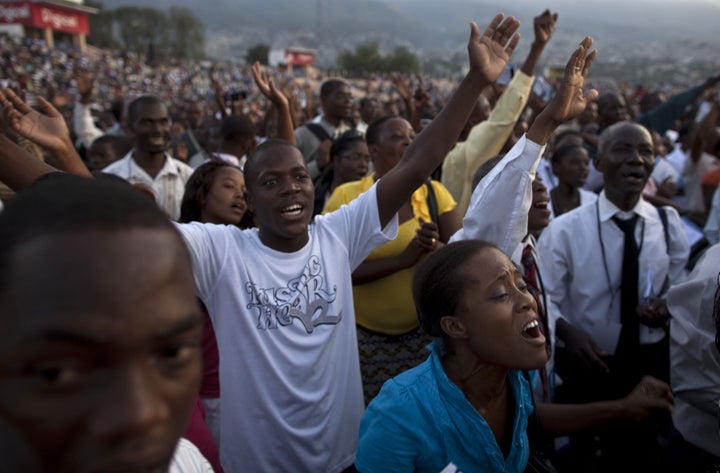
It has been one year since the people of Haiti suffered immense losses from the devastating earthquake that struck their country. But despite the frustrations of the relief process and the ravages of cholera, there is reason to find hope in Haiti. And that reason is its people.
I started my career in Haiti 30 years ago, as an economic officer in the U.S. Embassy. Because of the nature of the country and the post, I was able to dig much deeper into the issues affecting the country than most Foreign Service officers get to at that stage in their career and grew to understand the country's economic plight intimately. My interest in Haiti never left me. In the intervening three decades, Haiti has been through many changes; sadly, it has been mostly a downwards spiral of coups d'etats, trade embargoes, crime and violence. Perhaps the nadir came in 2004 when Cite Soleil, an infamous neighborhood of Port-au-Prince known as the worst slum in the western hemisphere, was declared "the most dangerous place in the world" by the UN.
But things changed from that point. The UN and Preval's government brought tentative stability to the country. Rampaging crime gangs were brought under control, kidnappings and homicides decreased. By this time last year, just before the earthquake, things were looking brighter for Haiti. Stabilization initiatives that emphasized infrastructure and employment had brought once off-limits areas, such as Cite Soleil, into the economic fabric of the city. A major U.S. hotel chain had plans to open the first line of foreign-run hotels in many years, betting on the future tourism prospects of the beaches of Jacmel.
Then the earthquake struck. Some saw this disaster as an opportunity for Haiti to "get out from under its past." Many commentators spoke of this as a potential turning point for Haiti, but the turning point had already taken place.
In April 2010, I visited Haiti again, as part of a philanthropic mission, hosted by Jeff Swartz, CEO of Timberland, and Bill Shore, who heads Share Our Strength. This gave me the opportunity to see first-hand that, despite the devastation of the earthquake, the Haitian people remained vibrant, undertaking whatever economic activity they could, whether selling their wares on the streets or lining up for cash for work or training opportunities. Whether they had a home or lived in camps, they were not going to give in to despair. And I saw that the most successful projects run by humanitarian assistance organizations were those that involved the people of their neighborhoods and communities at every stage.
Then, in October, I took over the leadership of a major international nonprofit, CHF International. Most notably, since 2006, CHF has been in Haiti undertaking economic development initiatives and since the earthquake also working on recovery programs, funded by USAID, as well as corporations and public donations.
It remains clear from my new role that the key to a successful future for Haiti lies in engaging the people of Haiti at the grassroots level. Since the earthquake, CHF has built over 4500 transitional shelters for homeless families in earthquake-affected areas. But while we can provide them with the shelters, it is they who can turn these into homes. The ingenuity, determination and, simultaneously, the familiarity of their homes and comforts is inspiring to see in action. This gallery of images shows what the Haitian people have done with their shelters, from building functioning bathrooms and showers, to porches, to turning their homes into fully functioning grocery stores. None of us foresaw that these would be pictures we would have at the first anniversary of the earthquake.
The challenge is in harnessing this ingenuity into the long-term reconstruction process. With USAID funding, we are now working on a pilot project in Ravine Pintade, one of the most damaged neighborhoods in Haiti, to involve the communities in their own reconstruction. Even at the stage of rubble removal and shelter, we can begin planning for an urban future that addresses their needs in a holistic way. Involving the communities in every stage of the urban planning process, we are working with the people of that neighborhood to rebuild, but this time to bring in broader roads, drainage, space for schools, green spaces - the key services required for a functioning city and economy. Even where those services are not yet available, the point is to plan for them now. This process gives residents a sense of ownership in their neighborhoods and allows them to have a hand, and voice, in rebuilding their neighborhood and to take on leadership roles.
The international development community has learned from interventions around the world that reconstruction must involve the people we intend to benefit. Haiti is no different. The job of those of us in the development profession is not to tell people what they need, but to listen, and instill hope and opportunity by being a catalyst for their own needs and desires. If we can do that, then real progress is possible.
